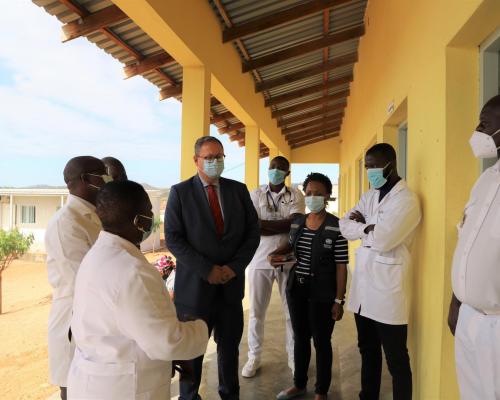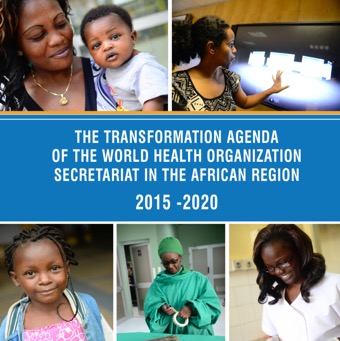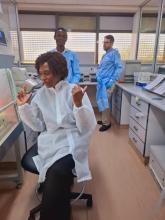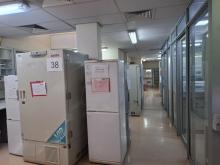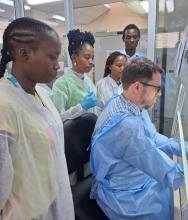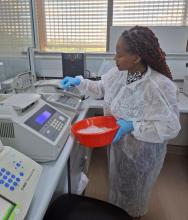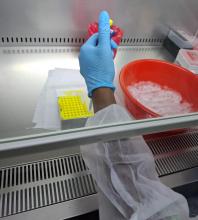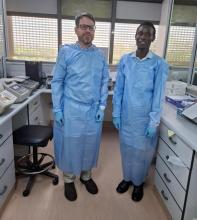WHO visits HIV testing centre lab: A step into cutting-edge technology
There is nothing as intriguing as getting firsthand information and experiencing the inner workings of a vital facility. Recently, I had the opportunity to tour the state-of-the-art HIV Testing Centre Lab, and I was truly impressed by what I saw. The lab’s advanced infrastructure and equipment are far beyond what I had imagined, offering a clear glimpse into the future of HIV drug resistance testing.
One of the key departments that stood out during my visit was the HIV Drug Resistance Department. I was fortunate enough to be guided through the lab’s workflow, which is both meticulous and groundbreaking. The lab operates with precision at every stage to ensure the highest level of accuracy in detecting drug resistance among HIV patients. The entire process, from sample collection to analysis, involves multiple critical steps:
1. Extraction of RNA: The first step involves isolating RNA from patient samples. This is a crucial stage to ensure the viral genetic material is ready for the subsequent analysis.
2. Reverse Transcription Process: In this stage, the extracted RNA is converted into complementary DNA (cDNA), which is necessary for further testing.
3. Nested PCR (Polymerase Chain Reaction): The cDNA is then amplified to target specific regions of the genome. This step ensures that sufficient quantities of genetic material are available for detailed analysis.
4. Gel Electrophoresis: After amplification, the genetic material is subjected to gel electrophoresis, a process that confirms the successful amplification of the target sequences.
5. ExoSAP Purification: This purification step ensures that any remaining contaminants are removed, leaving only clean genetic material for the next stage of analysis.
6. Cycle Sequencing: During this stage, the purified DNA is sequenced, allowing researchers to decode the exact genetic sequence of the HIV strain, an essential step for identifying potential resistance to treatment.
7. Detection on the 3500XL Genetic Analyzer: The final stage involves using the 3500XL genetic analyzer to detect and analyze the sequenced data, providing detailed information on the presence of drug-resistant mutations in the HIV genome.
This multi-step process not only demonstrates the lab’s cutting-edge technology but also highlights the incredible attention to detail and expertise required to ensure accurate results. Each stage builds upon the previous one, making the lab’s workflow a seamless operation, and ultimately providing crucial data to guide HIV treatment strategies.
During my visit, I had the chance to speak with two experts, Nick Wager from the CDC and Dr Seth Inzaule, a WHO consultant, who have been working together to support the lab's operations. Both provided valuable insights into the lab's impressive work. Nick Wager expressed his confidence in the lab’s infrastructure, highlighting how the design of the facility supports the multi-stage process of HIV drug resistance testing. "The lab is set up perfectly, with separate rooms for each stage, which is critical to maintain precision in testing," he explained. Having visited the lab in 2013, Nick was pleased to see how it had evolved while maintaining its high standards.
Seth, who is working alongside Nick, also spoke about the lab's potential to play a key regional role. "The lab has been designated as a national HIV drug resistance laboratory by WHO, and it has the capacity to support neighboring countries as well," he said. While acknowledging a few challenges in optimizing some of the assays, Seth believes that the lab is on track to become a significant player in the region’s efforts to combat HIV drug resistance. "With the right support, this lab could serve as a hub for the entire region," he added.
As I walked through the facility, I was reminded of the profound impact such labs have on global health efforts. With their advanced capabilities, they are paving the way for a deeper understanding of HIV drug resistance, helping to improve patient outcomes and shape more effective treatment protocols. It’s an honor to witness such innovation firsthand, and I look forward to seeing how this lab continues to contribute to the fight against HIV, not just in Botswana, but across the region.

